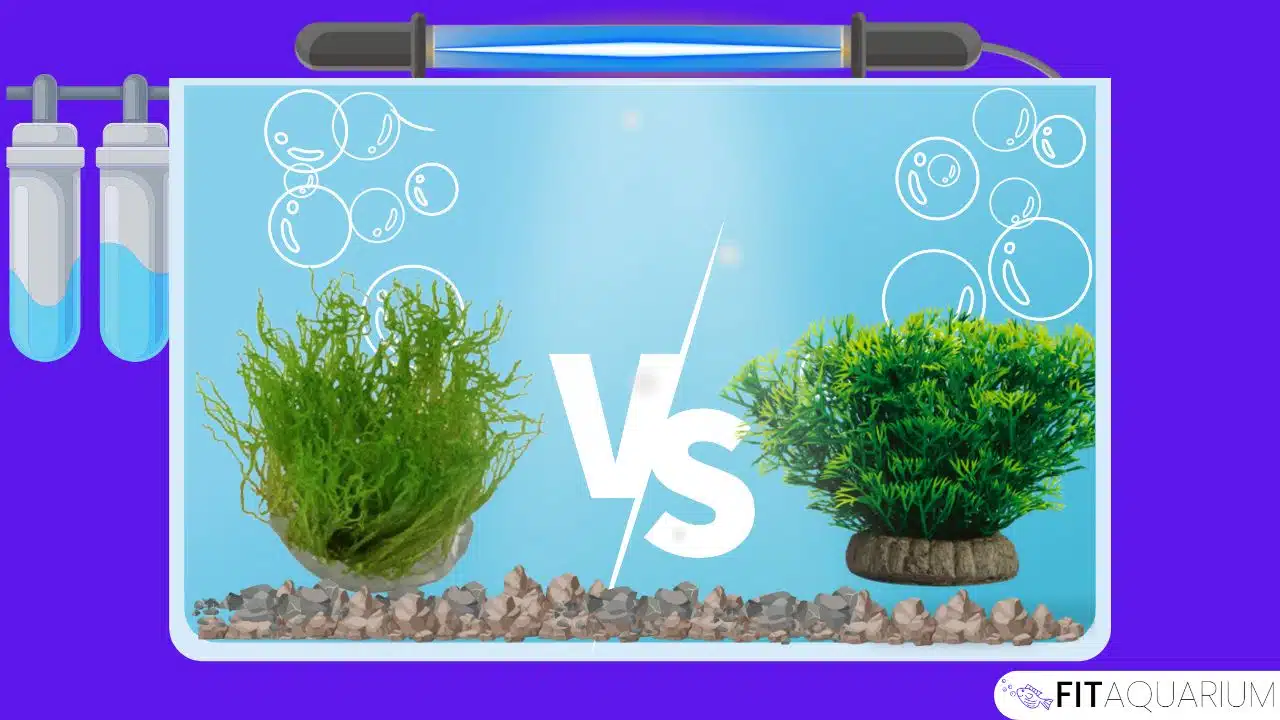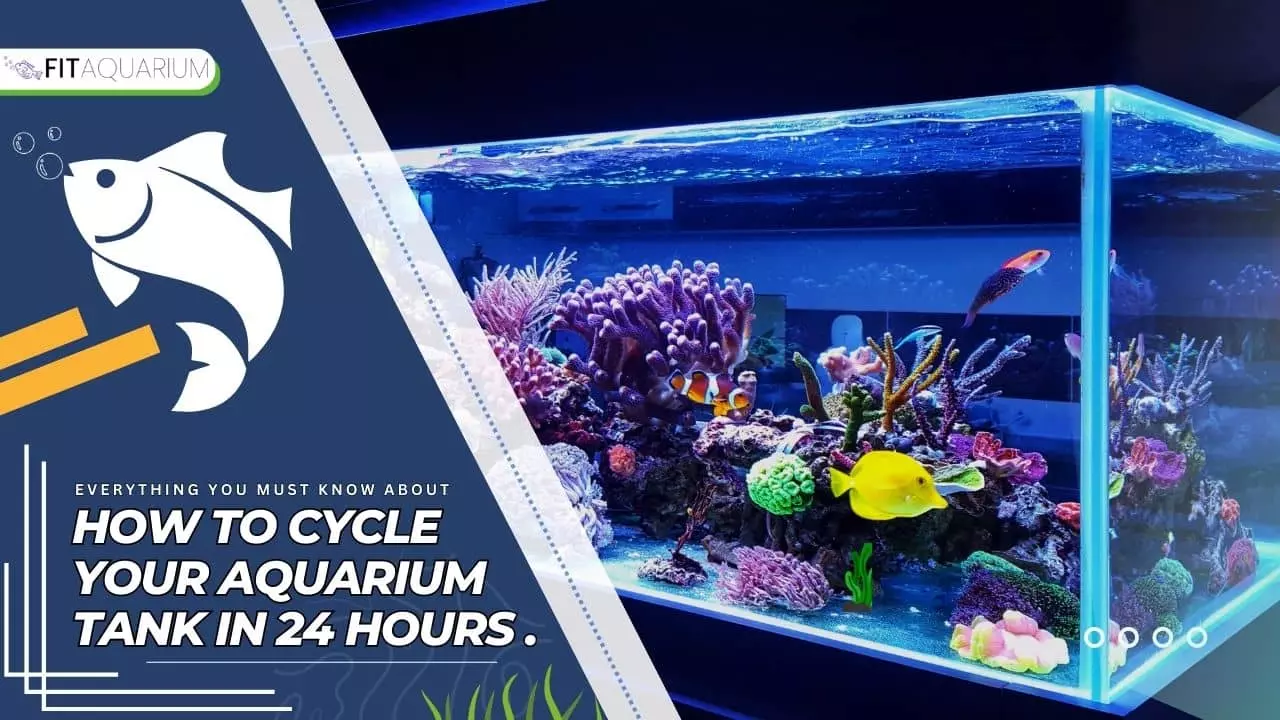Have you ever pondered how speedily the gorgeous and fascinating angelfish in your aquarium grows?
Angelfish, scientifically known as “Pterophyllum”, are charming freshwater famous aquarium fish kept by aquascapers worldwide.
For centuries, fish fans have been fascinated by these magnificent creatures with their long, smooth fins and attractive style of swimming. These are famous for their exceptional appearance and graceful behavior.
Table of Contents
In this article, I am going to take you into the enchanting world of angelfish where we will learn the growth and development stages of this aquatic creature. Also, we will discover the secrets behind their rapid growth.
So let’s explore the incredible journey of these aquatic marvels, from teeny-tiny fry to splendid adults. Because being a responsible angelfish owner, understanding the growth process of these finned mates is vital for providing them with the best care and ensuring their well-being.
Let’s have a quick view over the basic stats of the Angelfish.
| Property | Value |
|---|---|
| Common Name | Angelfish |
| Scientific Name | Pterophyllum |
| Type | Freshwater Fish |
| Diet | Omnivore |
| Size | 15cm (6 inches) in length and 30cm (11.8 inches) in height with fins included |
| Weight | Upto 3.5 pounds |
| Lifespan in the Wild | Up to 15 Years |
| Current Population | Stable |
| IUCN Red List Status | Least Concern |
Now you must have gotten a quick idea of what angelfish actually are. Before moving to our target answer for the question of how fast do angelfish grow, I would like to let you know how big do angelfish get in size.
Let’s figure out.
How big do angelfish get in full size?
Angelfish typically grow quickly in the first 18 months when they will grow from under 0.63 inches (1.6cm) to 4 inches (10cm). These fish can grow to be 6 inches (15.2cm) long and up to 10 inches (25.4cm) tall. It may take another six months for angelfish to grow to their full length and height.
An angelfish typically reaches sexual maturity at 8 months, so this is when it will reach adult size.
I am giving you an excellent range to consider the consistent average growth of an angelfish.
- (1.5 – 2.0 Centimeters) 8-10 weeks old.
- (2.0 – 2.5 Centimeters) 12-16 weeks old.
- (2.5 – 3.0 Centimeters) 24 weeks old.
- (3.0 – 4.0 Centimeters) 40 weeks old.

Note: Generally angelfish could be raised to a size of about 6 to 10 inches (15 to 20 cm) in height and have a body length of around 6 inches (15 cm)
How Big Is The Biggest Angelfish?
Angelfish in the sea can grow quite large and the best example of this is the Gray Angelfish (Pomacanthus arcuatus) which is the biggest species of marine angelfish, reaching lengths of 60 cm (24 in).
But you know that the largest freshwater angelfish is altum angelfish usually reaching 7 inches in length and 10-13 inches in height. In fact, the largest freshwater angelfish was an altum angelfish with a huge length of 20 inches measured from the anal fin tip to the dorsal fin tip.
How Long Do Angelfish Live?
Angelfish can live for 8 to 10 years in ideal tank conditions while in the wild it can survive up to 15 years. However, their lifespan is dependent on a variety of factors such as their environment, diet, water quality, and overall care. Angelfish kept in well-maintained aquariums with appropriate tankmates and proper water conditions have a better chance of living a longer and healthier life.
Angelfish reach their full size in the first 20 to 24 months of their lifespan. However, there are a number of factors ( that will be discussed later in this article) that affect the growth rate of angelfish and thus the time taken for angelfish to reach full size.
How Fast Do Angelfish Grow? Stage-by-Stage Progress
Let’s talk about the stages that are involved in the growth of angelfish.
The Early Days: From Fry to Juvenile (0-6 weeks)
The development of angelfish starts with the hatching of small, translucent eggs. When angelfish eggs hatch, they release little fry that are hardly observable to the naked eye.
These fry are transparent and lack the unique patterns and colors that mature angelfish are recognized for. At this stage, they are highly defenseless and require a safe and nurturing atmosphere to thrive. At this delicate stage, they depend on their yolk sacs for nourishment.
Within six weeks, they transform into young angelfish, exhibiting their distinctive and attractive patterns and colors. Their colors and fins become more apparent as they grow, and they begin to explore their surroundings.
Rapid Growth: Juvenile to Young Adult (6 weeks – 6 months)
Angelfish go through a period of speedy growth and change from juvenile to premature adult ones. These delightful beings’ growth accelerates as they grow from their early days as fry, showing the unique colors, patterns, and distinct characteristics that make them such captivating aquarium inhabitants.
As their age proceeds to six weeks, they experience a significant growth spurt. Their bodies extend, and their fins become more noticeable, giving them a more mature look. This stage is chiefly exciting for fish fans, as the changes are clearly observable, and each fish of this specie starts to show its individual characteristics.
Angelfish continue to develop their particular appearance as they mature. Their behaviors vary as they become more territorial. This is when they may begin to team up for breeding.
Maturing into Adulthood: (6 months – 1.5 years)
Angelfish don’t stop to develop their specific appearance as they mature. Their behaviors differ as they become more territorial. This is when they may start to team up for breeding.
During the ages of 6 months to 1.5 years, these fish experience significant physical development.
Their bodies continue to grow, and their fins reach a more noticeable and polished state. The different patterns and colors that define each angelfish breed become more intense and prominent in this stage.
Angelfish may start to make pairs during this phase for reproduction. Male and female angelfish may create pairs that show strong bonding manners. They may create territories and hierarchies within the tank, which can lead to interesting interactions among individuals.
If you aim to breed angelfish, providing suitable breeding places and closely observing their behaviors will definitely assist you in identifying potential partners.
Full Grown Angelfish: (1.5 years and beyond)
This is it, the angelfish has reached its full size potential. At the time when angelfish are of the age of 1.5 years and beyond, their physical beauty reaches its peak.
Their bodies will attain maximum size in terms of growth, and their fins will have their complete span and grace. The intricate patterns and vibrant colors that distinguish many angelfish breeds are now on full display.
From the attractive black stripes of the zebra angelfish to the rich golden colors of the gold angelfish, each specie will amaze you. With appropriate care, angelfish can live for many years, taking beauty and satisfying aesthetics to your aquarium for a long time.

Factors Influencing Angelfish Growth Rate
The growth of an angelfish depends upon a number of elements that work together to help in their development from small fry to stunning adults. Understanding these elements is essential for providing the greatest care and in helping you to make angelfish grow faster. Let’s have a glance over these elements

Genetics
Some things, such as genetics, are simply beyond our control. Angelfish’s genetic composition is important in defining their growth potential.
Because of genetic inheritance, some of them strain or breed naturally to grow faster or larger than others. Some fancier varieties of angelfish do grow slower and smaller. There is absolutely nothing you can do about it.
For example, French angelfish, which can grow up to 10 inches in 10-12 months is quite impressive. Majestic angelfish, on the other hand, takes about 5 years to reach the 7-inch mark.
Diet And Nutrition
Nutrition is essential for rapid growth. Angelfish obtain the vital elements they require to grow when they are fed a well-balanced diet of high-quality pellets, flakes, and sometimes live or frozen meals.
A variety of diets give numerous benefits to their general health and growth. You can offer angelfish crickets, mealworms, small crustaceans, mosquito larvae, Brine shrimp, Krill, small fish, microworms, water fleas and blanched veggies in your diet.
Temperature and Water Quality
Clean and stable water conditions are very necessary for the fast growth of angelfish. In ideal water conditions, angelfish tends to grow fast.
Ammonia, nitrite, and nitrate levels must be kept in check, and the pH and temperature of the water should remain stable.
Ideal water conditions for angelfish optimal growth are given below in this table
| Temperature Range | 25°C to 28°C (78°F – 84°F) |
| pH | 6.8 to 7.8 |
| Water Hardness | 54 to 145 ppm (3-8°dKH) |
| Ammonia | 0 ppm |
| Nitrite | 0 ppm |
| Nitrate | Below 20 ppm |
Poor water quality can stress angelfish and may cause to stunt their growth. Water changes on a regular basis help to preserve water quality by removing accumulated garbage and contaminants.
Filtration enables enough water circulation and oxygenation, all of which are required for the dreamed growth of angelfish.
Tank Size and Environment
Having enough space to swim and grow is vital for the growth of your angelfish. Overcrowding can restrict their development and lead to stress-related problems, and poor and stunted growth.
A well-decorated tank with hiding places, plants, and appropriate tankmates can all help to create a stress-free atmosphere that must be beneficial for the good and fast growth of these fish.
A pair of angelfish require a minimum of 20 gallons of aquarium space. This means that one angelfish requires at least 10 gallons of aquarium space to survive easily.
A 40-gallon tank is ideal for a pair of angelfish because they require plenty of swimming space. As this fish grows tall rather than long, you should buy a tall tank rather than a wide one.
In an 80-gallon tank, you can raise a small school of angelfish. However, for your fish to thrive, you will need a much larger setup.
Tankmates and Social Interactions
Stress can have a considerable impact on the rate of growth. Abrupt changes in water conditions, handling, or aggressive tankmates can stress angelfish and hinder their growth. Providing a stable, stress-free environment and compatible tank mates may help angelfish reach their maximum growth rate. These mates may include
- Tetras
- Corydoras Catfish
- Dwarf Cichlids
- Gouramis
- Livebearers
- Loaches
- Peaceful Rasboras
- Non-Aggressive Guppies
Feeding Frequency and Portion Size
Angelfish should be fed appropriately, ensure not to overfeed or underfeed them.
Giving 3-4 small meals per day instead of 1 or 2 large meals is said to help reduce cichlid aggression over resources. In terms of quantity, try to give them something they can eat in 30-40 seconds. Also fasting for one day in weak can increase your angelfish digestive strength, helping to boost its growth.
Overfeeding can impair water quality while underfeeding can hinder growth to a great extent. Multiple short meals throughout the day are preferable to one major feeding. This will surely make your angelfish grow faster.
These were the factors that can affect an angelfish’s growth rate and growth size as well.
11 Species of Freshwater Angelfish and their Maximum Size within Aquarium
Domestic freshwater angelfish are the result of many decades of selective breeding for specific colors and characteristics such as stripes and spots. They can vary in size too. So, let’s take a look at the ten most common types of angelfish and learn how long these can be raised to size.

Altum Angelfish
As I mentioned before, the largest freshwater angelfish found in history was an “Atlum”. Despite this, it is not as commonly known as other species but it is indeed magnificent too.
In an aquarium, these can be grown up to 7 inches long and 9 inches tall.
This specie of angelfish possesses silver bodies with vertical brown or black stripes. These are larger, flatter, and deeper as compared to other kinds of angelfish.
Half-Black Angelfish
According to my own experience, this is the most interesting-looking angelfish. The lower half of their body is entirely black, as the name implies, while the upper half is an iridescent shade of silver.
This specie of angelfish may grow up to 6 inches.
But as much as it is gorgeous, it is rare so most probably you will not find this specie with ease.
Silver Angelfish
This is the most common easily available specie of angelfish.
They can grow to the size of 6 inches length in aquariums but in the wild, they can easily touch a figure of 10 inches in length.
Their physical appearance includes a silver body with three signature black stripes along with the eyes in a piercing red color.
Blushing Angelfish
The word ‘blushing’ in the name of this specie has an interesting background.
The gill cover of this specie lacks pigmentation due to which red coloration of the gills is clearly visible. The rest of the body is a brilliant shade of iridescent white.
In aquariums, blushing angelfish also grows up to 6 inches long.
Marble Angelfish
In this specie, a variety of colors include the genes for color marbling – a beautiful spotted arrangement of color that form a unique pattern on every fish.
Trust me, each fish from the marble angelfish family is rare.
In captivity, marble angelfish grows up to 6 inches length.
Golden Marble Angelfish
These fish are distinguished by their gold patches and distinctive marbled patterns on the body. As this specie is also a sub specie of marble angelfish, each fish of this family is uncommon too.
In an aquarium tank, golden marble angelfish also grow up to 6 inches.
Zebra Angelfish
These fish closely resemble silver angelfish in appearance, but there is one main difference. Zebra angelfish have 4 stripes, whereas silver angelfish only have 3 stripes.
Three stripes run down the body and one runs through the eye.
Zebra angelfish reach full size of 6 inches length in fish tanks.
Black Lace Angelfish
This specie is actually a zebra or silver angelfish sub specie with some extra black genes.
Their breeding was started in the 1950s for the first time. Some aquarists believe this angelfish is one of the most beautiful angelfish existed ever and up to some extent they are right because of the enchanting looks black lace angelfish has.
In aquariums, black lace angelfish also grow up to 6 inches.
Koi Angelfish
This special variety of angelfish has been bred to have the same coloration as Japanese koi fish. The most fascinating fact about these fish is that the amount of orange in their body varies according to their stress level. When the fish is stressed, the orange will darken.
In fish tanks, koi angelfish also grow up to 6 inches
Pearlscale Angelfish
This species is distinguished by its raised, pearl-like scales. Pearlscale angelfish can reach about 6 to 8 inches (15 to 20 cm) tall, including their fins.
Dumeril’s Angelfish
This species has a rounded body and is distinguished by its striking black-and-white coloration.
Dumeril’s Angelfish can grow up to 8 inches (15 to 20 cm) in captivity.
Regal Angelfish
Regal Angelfish has a magnificent color scheme of yellows, deep blues, and blacks. Due to its limited natural habitat, aquarists found it rare.
Regal Angelfish also known as Royal Angelfish reaches an approximate length of 8 – 12 Inches.
Average Angelfish Size
It is noted that around all species of angelfish have an average size of 6 to 8 inches in captivity. However, some individuals may vary due to some environmental factors.
Conclusion
Although angelfish growth is a complicated process influenced by a variety of factors. This growth is directly proportional to the facilities, quality and quantity of nutritious elements, and sustainable environment.
The greater you aim to provide these facilities, the faster the angelfish will grow. Also, you can create an environment that fosters healthy growth and that can flourish angelfish by avoiding common mistakes like overcrowding, poor nutrition, insufficient tank maintenance, incompatible tankmates, incorrect water parameters, poor feeding practices, and a lack of hiding places.
Finally, it all depends on how much you can care for little fish as your care is directly linked with their growth.
Frequently Asked Questions
Here are some hot questions about the topic.
-
How to make angelfish grow faster?
Angelfish, like other fish, have specific growth rates, which are governed by factors such as genetics, water quality, diet, and environmental circumstances. While you cannot significantly boost their growth rate, yet you can provide them with the best circumstances to allow them to grow at a healthy rate.
-
Do male angelfish grow faster?
Yes, it is correct. Male angelfish typically grow more quickly than female angelfish. I had angelfish in my tank, and some of them grew to full size faster than others in the same timeframe. The quicker ones turned out to be male. Male angelfish can grow up to 30% faster than female angelfish.





